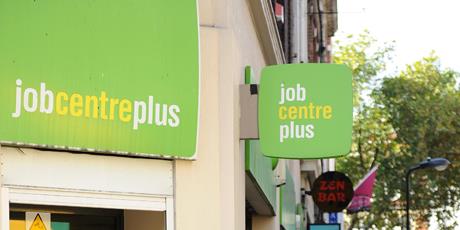Delivering a more efficient and modern employment service

Final plans have been published to update the DWP’s property estate so services reflect the way people access jobs and the benefits system.
Today’s (5 July) announcement confirms that some smaller jobcentres will merge with larger ones, and others will be co-located with local government premises. It will mean that the Department for Work and Pensions (DWP) will be able to offer a more efficient service, while delivering good value for the taxpayer and saving over £140 million a year for the next 10 years.
The support provided to jobseekers will be further strengthened this year as more work coaches are recruited in every nation and region of the UK.
The plans reflect the fact that eight out of ten claims for Jobseeker’s Allowance and 99% of applications for Universal Credit full service claims are now made online. This means that DWP buildings are used much less with 20% of the estate currently underutilised.
Jobcentres and benefit centres are covered by Public Finance Initiative (PFI) contracts which are now coming to an end. In the 20 years since these contracts were signed, the welfare system has undergone large-scale reform.
Since 2010, around 3 million more people are in work, youth unemployment has fallen by 375,000, the employment rate is at a record high and unemployment is at the lowest level since 1975.
 Damian Hinds, Minster for Employment said:
Damian Hinds, Minster for Employment said:
We will always make sure that people have the support they need to get into and progress within work. These changes reflect the fact that more people access their benefits online resulting in many of our buildings being underused.
We’re merging some offices and locating other jobcentres with local authorities to make sure that the welfare state and our employment support works for those who need it and those who pay for it.
Today’s announcements confirm that DWP plan to:
- merge 68 smaller jobcentres into larger or underused ones nearby
- move 4 jobcentres to new sites where we have secured better new premises
- co-locate around an additional 40 jobcentres with local authorities or other community services to provide joined-up services for the local community with all services in one place
- move to a network of larger more efficient corporate and back office buildings, opening a new corporate site and 5 new large service centres across the country, in a phased approach starting in 2018 and closing 26 processing or corporate sites
- close 4 offices where the building is no longer used and standing empty
- retain almost 800 offices
- re-organise the corporate centre to make maximum use of 7 regional corporate hubs (in 6 cities), including establishing a new office in central Manchester
The planned changes have been made in consultation with staff taking into account the impact on benefit claimants and DWP staff. The majority of staff will remain in their current offices. Where staff need to move office, most moves are within a short distance but if this is not the case alternative job roles will be offered wherever possible.
Initial plans to reform the DWP estate were published on 26 January 2017. Read the written ministerial statement on DWP estates
It was announced that tenancies would be renegotiated in the 2015 Spending Review
DWP currently uses over 900 buildings around the UK – all of them leased from a range of landlords. The DWP estate covers around 1.5 million square metres across the country, of which 300,000 square metres is under-utilised.
The expiry of the PRIME contract provides DWP with the opportunity to review which offices they need, leaving those that they no longer need at commercially advantageous terms and having the opportunity to negotiate better deals on those they want to use in future.
The savings of over £140 million a year for the next 10 years will be made by a combination of a smaller estate, rent set to market levels, a new service delivery model and maximising space usage.
Where practical, they are co-locating with local authorities in their buildings. These arrangements bring benefits for the department, claimants and the taxpayer. More of the services that customers use are in one place which means that claimants have access a greater breadth of expertise.
In the areas that underwent public consultation and a jobcentre is merging with another, an outreach service will be put in place within the local community to ensure people can access support to get into employment. Vulnerable people will continue to receive home visits and postal claims where it is appropriate to do so.
The majority of staff will remain in their current offices with others moving to another DWP site nearby. There may be some redundancies: but DWP expect these numbers will be around 750 people (less than 1% of our overall staff numbers) and the majority of these will be covered by their voluntary redundancy scheme.
This programme is about reducing under-used space, not reducing staff numbers. The figures take account of 13 sites which are currently still under commercial negotiations and for which we are unable to announce at this point.











Responses